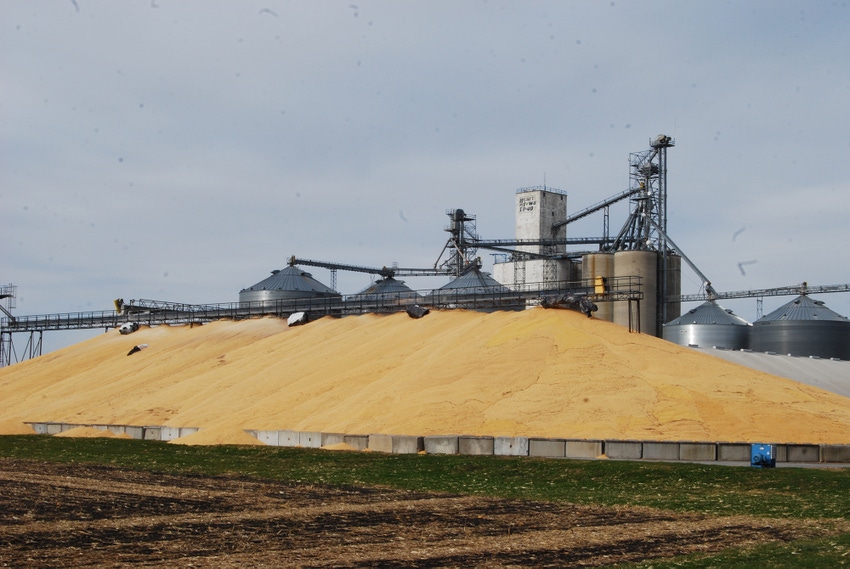
Whether you produce crops or livestock, making a profit will be challenging in the year ahead. “It doesn’t matter where we look in agriculture today, supplies are overwhelming demand,” observes Iowa State University Extension grain marketing economist Chad Hart. “Demand is really pretty good, but supplies of grain and meat are huge and low prices continue to reflect this situation.”
Farmers have more bushels per acre, but that limits price potential
Hart and ISU Extension livestock economist Lee Schulz are presenting their analysis at Pro-Ag Outlook meetings across Iowa as 2016 comes to an end. This fall’s record corn and soybean crops in Iowa and the nation are adding to large carryover supplies from 2015. USDA estimates Iowa’s 2016 corn yield is averaging 199 bushels per acre and they peg the soybean yield at 59 bushels per acre, new highs for both crops.
“Farmers have more bushels to sell, which improves their margins this year but it limits the upside price potential into next year,” says Hart.
Producing more bushels per acre lowers the cost per bushel. Hart says if farmers can match the USDA yield projection for corn and soybeans, most will at least break even or limit their losses. Those fortunate enough to exceed the yield projections will likely turn a profit. Growers with high yields who control costs will be helped the most.
Low prices projected to continue for corn, soy beans in 2017
Looking ahead to the 2017 crop, Hart is projecting average losses of $50 to $100 per acre for both corn and soybeans. Despite negative margins, soybean acres could actually increase in 2017 because other crop prices, wheat for example, are even worse. “If there was a better market for another crop, farmers would be moving land to that crop. There isn’t one,” says Hart.
“We need demand to continue to increase and weather problems to reduce production somewhere, hopefully not here, to improve our prices.”
Record crops have lowered feed costs for livestock producers
Big crops have driven feed costs lower, helping livestock farmers. Beef prices are down 35% and pork prices down 60% from peaks of two years ago. “Similar to corn and soybeans, we’re dealing with record supplies of red meat and poultry,” says Schulz. He expects cattle prices to be more stable in coming months as beef herd expansion slows. “We’re still looking at red ink, but as far as huge losses, the worst is behind us.”
Hogs are also looking at losses into next year, says Schulz, but the longer-term outlook is more favorable thanks to feed costs expected to remain low and more pork packing capacity coming online. Hog prices dipped to a 6-year low in October 2016 as packing plants ran near or above capacity for several weeks this fall. “Short term, we are looking at red ink but as we recover from the big meat supply there’s opportunity ahead for profit and growth in hogs,” says Schulz.
Exports are critically important to create demand for huge crop
The U.S. is the land of surplus. “We produce more corn, soybeans, wheat, milk and meat than we consume,” notes Hart. “We depend on the rest of the world needing our excess.”
A key country to watch as a potential buyer is China. It will remain a buyer of soybeans on the world market over the long-haul, he says. China will grow a little more of its own soybeans, but doesn’t have the good cropland to expand much in soybeans. China has been expanding in corn production for years. Hart believes China will continue to be a major buyer of both corn and soybeans from the U.S. despite recent policy changes to try to increase its own production.
Continued growth in feed demand for corn, bean meal expected
Ethanol demand for U.S. corn is leveling, but continued growth in feed demand for corn and bean meal is expected despite tough livestock markets. “Livestock producers will feed more cattle, pigs and poultry,” says Hart. Pork and beef exports are expected to continue growing in 2017.
Farmers will have to improve their marketing skills and control costs to find ways to squeeze out profits in 2017. “It’s shaping up as a challenging year but there are ways to meet the challenges and come out ahead,” says Hart. “It’s not a totally dire situation. We became used to high prices several years ago. We know how to survive this downturn, by controlling costs and using smart marketing.”
About the Author(s)
You May Also Like




